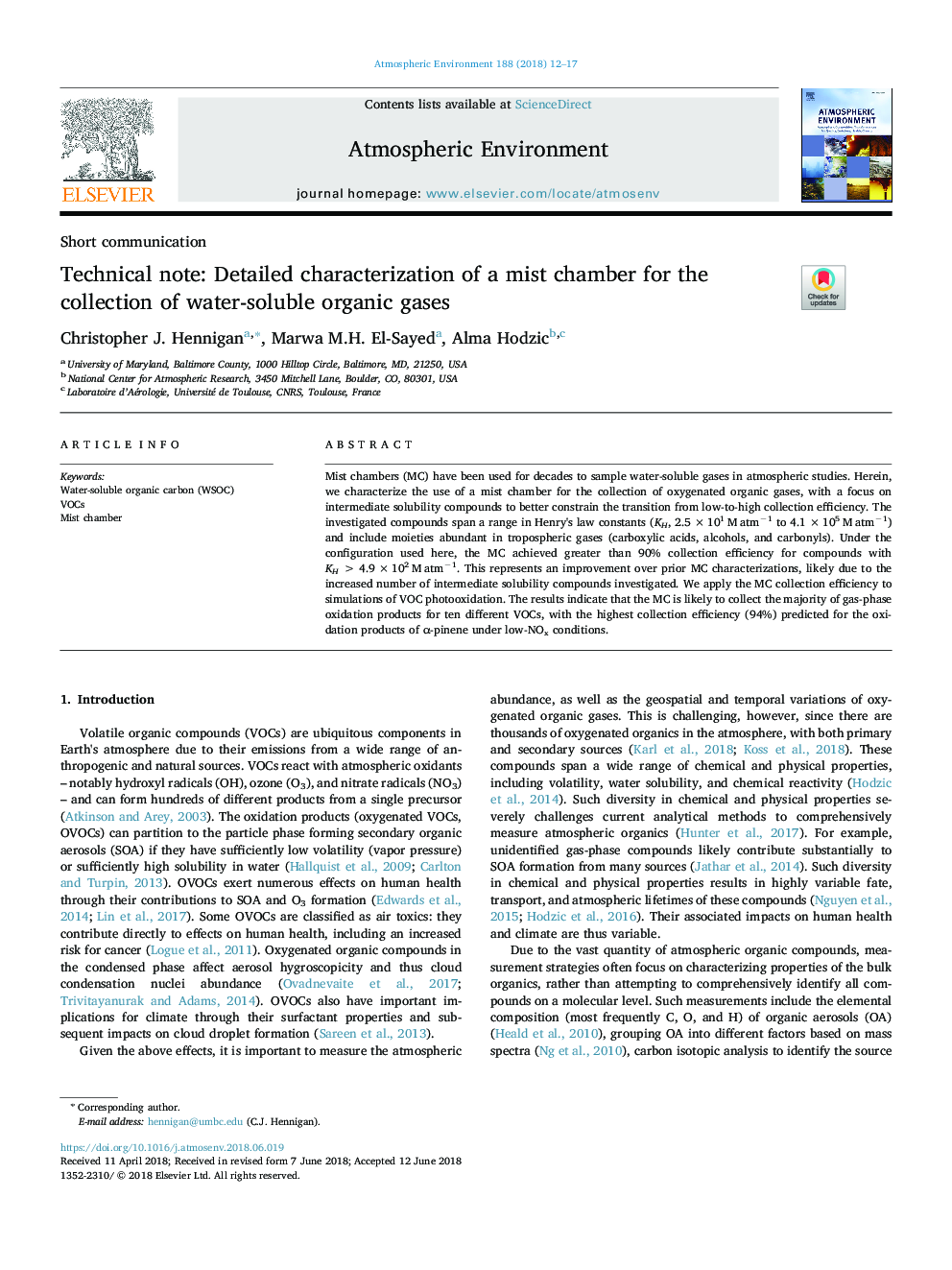| Article ID | Journal | Published Year | Pages | File Type |
|---|---|---|---|---|
| 8863588 | Atmospheric Environment | 2018 | 6 Pages |
Abstract
Mist chambers (MC) have been used for decades to sample water-soluble gases in atmospheric studies. Herein, we characterize the use of a mist chamber for the collection of oxygenated organic gases, with a focus on intermediate solubility compounds to better constrain the transition from low-to-high collection efficiency. The investigated compounds span a range in Henry's law constants (KH, 2.5â¯Ãâ¯101â¯Mâ¯atmâ1 to 4.1â¯Ãâ¯105â¯Mâ¯atmâ1) and include moieties abundant in tropospheric gases (carboxylic acids, alcohols, and carbonyls). Under the configuration used here, the MC achieved greater than 90% collection efficiency for compounds with KHâ¯>â¯4.9â¯Ãâ¯102â¯Mâ¯atmâ1. This represents an improvement over prior MC characterizations, likely due to the increased number of intermediate solubility compounds investigated. We apply the MC collection efficiency to simulations of VOC photooxidation. The results indicate that the MC is likely to collect the majority of gas-phase oxidation products for ten different VOCs, with the highest collection efficiency (94%) predicted for the oxidation products of α-pinene under low-NOx conditions.
Related Topics
Physical Sciences and Engineering
Earth and Planetary Sciences
Atmospheric Science
Authors
Christopher J. Hennigan, Marwa M.H. El-Sayed, Alma Hodzic,
